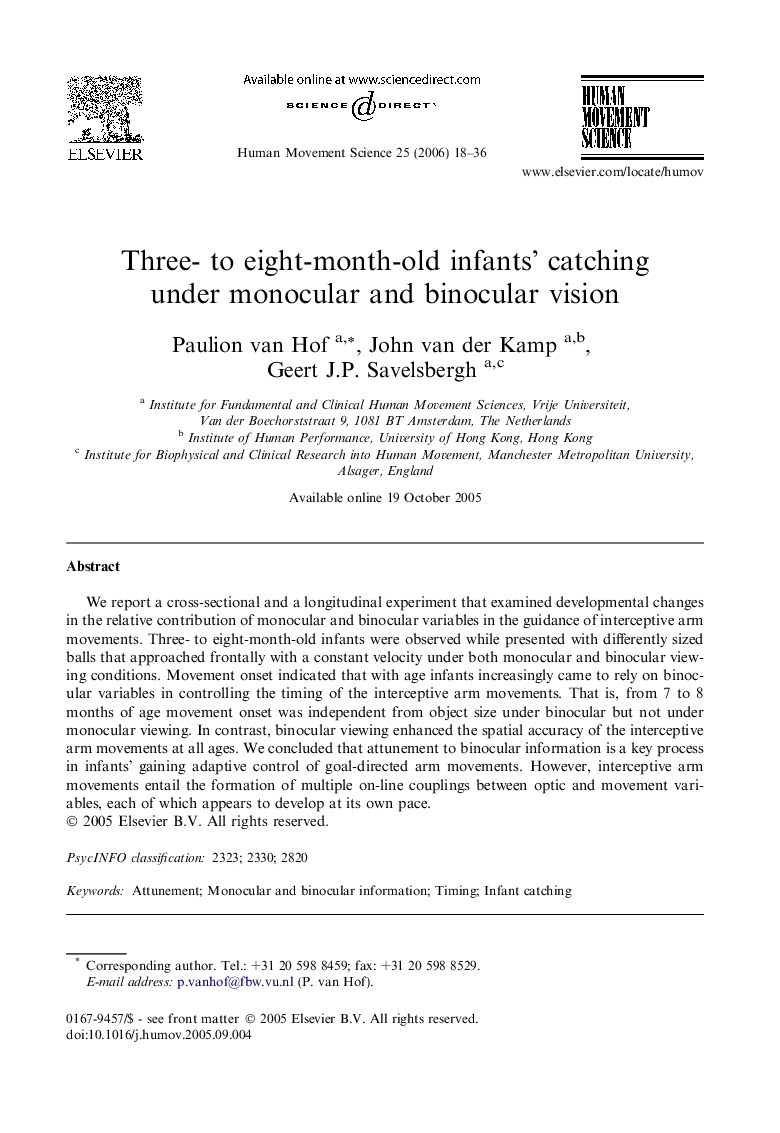| Article ID | Journal | Published Year | Pages | File Type |
|---|---|---|---|---|
| 928969 | Human Movement Science | 2006 | 19 Pages |
We report a cross-sectional and a longitudinal experiment that examined developmental changes in the relative contribution of monocular and binocular variables in the guidance of interceptive arm movements. Three- to eight-month-old infants were observed while presented with differently sized balls that approached frontally with a constant velocity under both monocular and binocular viewing conditions. Movement onset indicated that with age infants increasingly came to rely on binocular variables in controlling the timing of the interceptive arm movements. That is, from 7 to 8 months of age movement onset was independent from object size under binocular but not under monocular viewing. In contrast, binocular viewing enhanced the spatial accuracy of the interceptive arm movements at all ages. We concluded that attunement to binocular information is a key process in infants’ gaining adaptive control of goal-directed arm movements. However, interceptive arm movements entail the formation of multiple on-line couplings between optic and movement variables, each of which appears to develop at its own pace.
